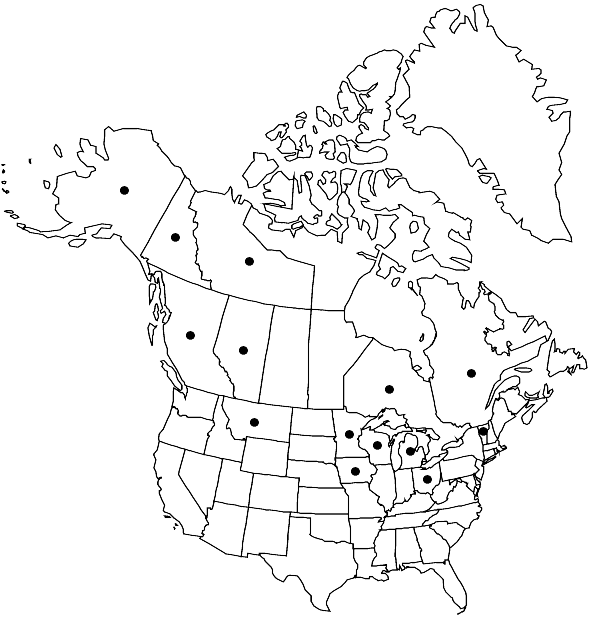Tortella inclinata
Laubm. Deutschl. 1: 602. 1888,.
Plants dull yellow-green to yellowish brown distally, brown proximally, elongate, not rosulate. Stems 0.5–1(–1.5) cm, central strand absent; stem sparsely rufous radiculose-tomentose at the base, essentially without tomentum distally. Stem leaves somewhat soft or lax, loosely to more closely foliose, variably gradually somewhat larger and more crowded toward the stem tips or the reverse with the leaves somewhat larger proximally than distally, loosely and irregularly curled to crisped when dry, erect-spreading to spreading when moist, oblong-lanceolate, to lanceolate, sides generally parallel and scarcely tapered from the base, typically strongly keeled-concave or broadly channeled across the leaf adaxially, (1–)1.5–2 mm, not undulate; base not differentiated or somewhat broader, elliptical; margins plane to erect, broadly incurved distally, not undulate; apex typically cucullate, occasionally fistulose, obtuse to acute, occasionally abruptly narrowed and concave-acuminate; costa short-excurrent by 1–3 cells, cells of the adaxial surface cells entirely smooth and narrowly elongated, 8:1, throughout, adaxial epidermis absent, without 2-stratose areas at juncture with lamina; occasionally abaxial surface roughened by projecting distal cell ends, these more dense at the leaf apex; proximal laminal cells abruptly differentiated from distal cells, pale yellow, transparent, elongate, laxly very thin-walled and fragile, smooth; marginal cells undifferentiated, sharply crenulate-papillose; distal laminal cells densely and sharply papillose, quadrate, 10–12 µm wide. Specialized asexual reproduction none. Sexual condition dioicous; perigonia not seen; perichaetial leaves of fertilized archegonia conspicuously differentiated, elongate, 2–5.5 mm, erect from a broad, long and hyaline sheathing sometimes inflated base, when dry, the erect leaves distinct from the crispate stem leaves. Seta 1.5–2.7 cm. Capsule 1.5–2 mm, annular cells not vesiculose; operculum 1–2 mm; peristome teeth long, to 0.7 mm, spirally wound more than once.
Distribution

North America, South America, Europe, Asia, Africa, Australia.
Discussion
Varieties 3 (2 in the flora).
Selected References
None.
Key
| 1 | Stems short, to 1 cm, not to few-branched, tomentum usually conspicuous; leaf cross section with adaxial and abaxial superficial walls the same width as the cross-walls; papillae not elevated, leaf cells 10-12 µm, stems yellow or green, rather pale, brown proximally, yellow in KOH; leaves irregularly twisted and incurved when dry; majority of leaf apices obtuse, strongly cucullate, mucro of 1-3 cells; low sandy alluvium of beaches and streams | Tortella inclinata var. inclinata |
| 1 | Stems tall, to 2 cm, many-branched, tomentum hidden in leaf axils; leaf cross section with thick abaxial and adaxial superficial walls, but thin cross-walls; papillae appearing pedestaled on thick walls, leaf cells 7-10 µm; stems dull and often strongly orange-green, orange, or dull green distally and brownish black proximally, orange in KOH; leaves when dry somewhat uniformly twisted on the stem (funaliform), erect proximally; leaf apices cucullate, acute, to narrowly acuminate, mucro of 5-7 cells; rock crevices, hillsides and upland alluvium | Tortella inclinata var. densa |